Currawong’s 10th Anniversary Funding: the investment in local Heritage continues


Member for Pittwater Rob Stokes announced additional funding to support the ongoing restoration of the Currawong Beach cottages on Tuesday May 25th. The announcement preceded the Sunday May 29th 2011 10th year marker of a community celebration at Currawong Pittwater's state representative was an integral part of.
A further $148,000 has been allocated under the NSW Government’s 2021 Heritage Grants Program to celebrate 10 years since Currawong was returned to public ownership. This brings the total amount allocated by the NSW Government to support the restoration project to more than $2.9 million.
“We’ve seen incredible improvements at Currawong in recent years and this extra funding will help support the next phase of works,“ Rob Stokes said when making the announcement.
“Importantly, the restoration works are being undertaken with complete respect to Currawong’s rich history and unique environmental characteristics.
“By using modern materials to match the original fabric and features - we're able to see the holiday cottages brought up to a contemporary standard without losing the iconic charm.
"We never wanted a situation where Currawong was simply purchased and roped off. We all want as many people as possible to experience and enjoy this truly magical place," Rob Stokes said.
The restoration works at Currawong commenced in 2014 and are being progressively undertaken as part of a joint initiative involving the Council, Friends of Currawong, Pittwater Environmental Foundation, Currawong State Park Advisory Committee and the NSW Government.
The grant is among 220 projects being funded under the NSW Government’s NSW Heritage Grants Program. The grants are awarded to heritage owners and custodians, local government and the community. This enables the delivery of a broad range of heritage outcomes including conservation and repair works, education programs, and heritage interpretations.
Minister responsible for Heritage Don Harwin said our heritage enriches our lives, helps connect communities, enhances our wellbeing and supports local economies.
“These grant projects will help ensure that our heritage is conserved and maintained for future generations. We want to actively engage communities in understanding and promoting the fascinating stories of our state,” Mr Harwin said.
The 2021-23 grant round saw over $5.5 million awarded to projects across three broad funding categories: Aboriginal Cultural Heritage, Caring for State Heritage and Community Heritage. Funding has been prioritised to support recovery and preparedness for natural disasters, with more than $4.6 million invested in 182 projects in areas affected by declared natural disaster.
“This funding will bring an important boost to the parts of the state hit hard by drought, bushfires, storms and floods,” Mr Harwin said.
Among this extensive list is a $22,370 grant for the heritage listed Loggan Rock cabin, for roof restoration, an $11,000 grant to Council, among 71 projects totalling $781,000 were approved under the Local Government Small Heritage Grants (Devolved funding), $12,000 to Council for Local Government Heritage Advisor Services, one of the 75 projects totalling $900,000 that were approved under this, with 6k allocated each year over 2 years.
Some of the projects supported include a virtual tour of the former Kinchela Aboriginal Boy’s Home Training Site in Kempsey, conservation of woolsheds in the south and north west of the state, and conservation of the Lady Denman ferry in Shoalhaven. A range of the state's historic and iconic churches will also see maintenance under the grants.
The Currawong Cottages Restoration - Phase 2 - Platypus, is part of this investment into NSW heritage. Readers can learn more about heritage in your local area by searching the NSW State Heritage Inventory. Information on all the successful grants is on the Heritage NSW website, however, the news for Currawong's restoration works will bring a smile locally.
Currawong is a heritage-listed, holiday retreat, located at the northern end of Pittwater, across the water from Palm Beach Wharf and accessible only by ferry or boat. There are nine small cabins - each accommodating a family of five, a four bedroom homestead and a lodge suitable for small groups.
For twelve years the Friends of Currawong ran an intensive campaign to save Currawong from developers. On the 8th of April 2011 Currawong came under the ownership the the NSW State Government and the management of Pittwater Council.
Over 1000 people attended the Currawong Day celebration at Currawong Beach on Sunday 29th of May, 2011. The day was filled with showers, rainbows, sunshine, a kookaburra watching the proceedings from the Jacaranda tree outside Midholme and other omens of blessing and success. In the lines waiting patiently to catch ferries a sense of bonhomie. On the ferries strangers greeted each other and shared stories as though they had all been going to this place for decades together like this - which some of them actually had been doing. The excitement and happiness created a party atmosphere that lasted all day.
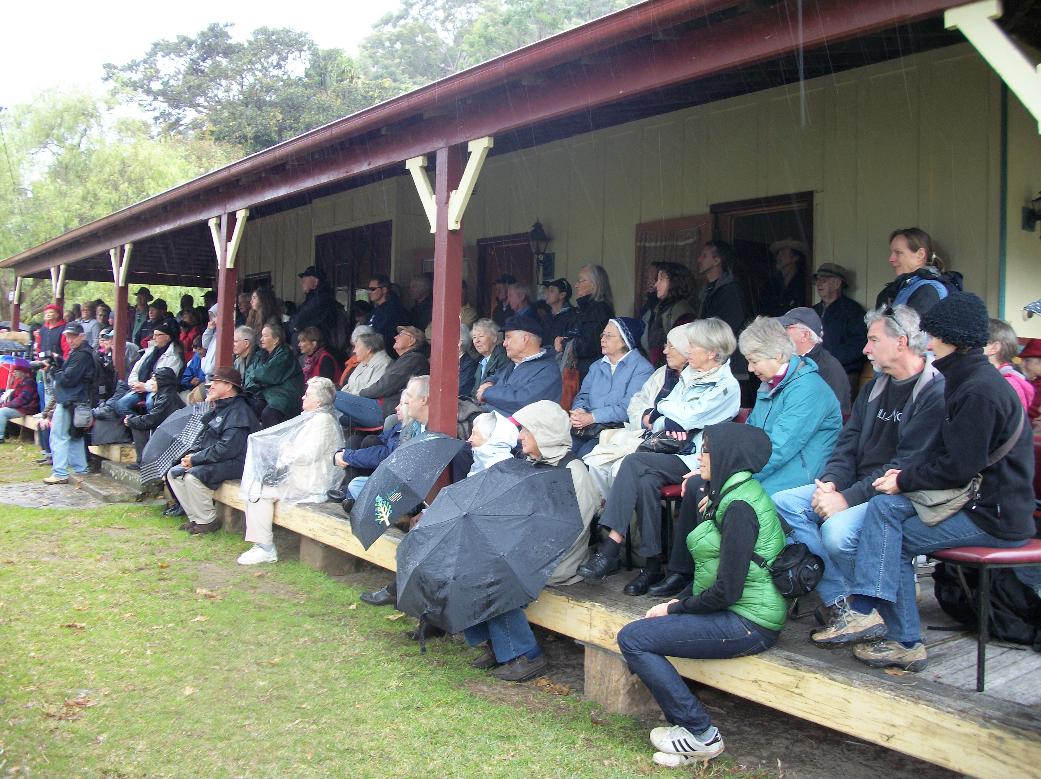
Community Group The Friends of Currawong are who began and led the charge to save this place. They did not cease or desist in their efforts until the job was done. Rob Stokes did more then most are aware of and worked tirelessly to ensure Currawong remained a haven that is inclusive for all rather then exclusive (to exclude). He was there at the beginning, did all he could to ensure the issue stayed alive through the years it took to win back the People’s Park, and he was there at the end.
Then Mayor of Pittwater, Harvey Rose, who led the Friends of Currawong before having to step down due to his new role, and Mark Ferguson, General Manager at Pittwater Council, brought the considerable knowledge, energy and integrity of what a Council should be to bear on each new phase of the strange waltz one Developer after another tried to impose on them and us. The Labour government’s Part 3A of the Environmental Planning and Assessment Act, which gives one Minister the ‘yay or nay’ also makes Kristina Keneally, when she was Planning Minister, the key turning point. Once Ms Keneally Heritage Listed Currawong any proposed ‘development’ of the site would be restricted.
The quote of that week is 'With patience and persistence we will prevail'. This is how Shane Withington signed off all Newsletters from the Friends of Currawong during the long battle to save the historic site of Currawong Beach and Family Park from Developers. On Currawong Day Sunday that became 'With patience and persistence we have prevailed'.
A few extracts from those speeches made on Currawong Day 2011 -
Shane Withington:
"Michael Mannington thank you for all the photography, Harvey Rose, former leader of the Friends of Currawong. Most community groups wont get council support. They were with us from day one. I’d also like to thank every single person who made a phone call, or wrote a letter, without you we wouldn’t be standing here today.
As visitors you will see open spaces and experience peace. What you won’t see is five McMansions along the waterfront. What you will see, 40 years from now, is children being able to jump off that wharf into the water, and families being able to come here to experience this pristine environment."
Shane concluded his oration by presenting a cheque of donations by members of the community to Bill Rooney of the Pittwater Environmental Foundation "for the Restoration of this beautiful site".
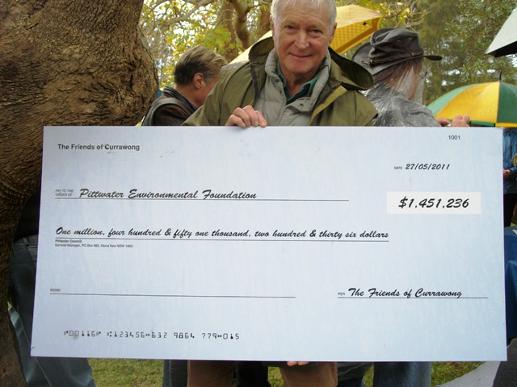
Bill Rooney (R.I.P.) with that cheque - photo by A J Guesdon
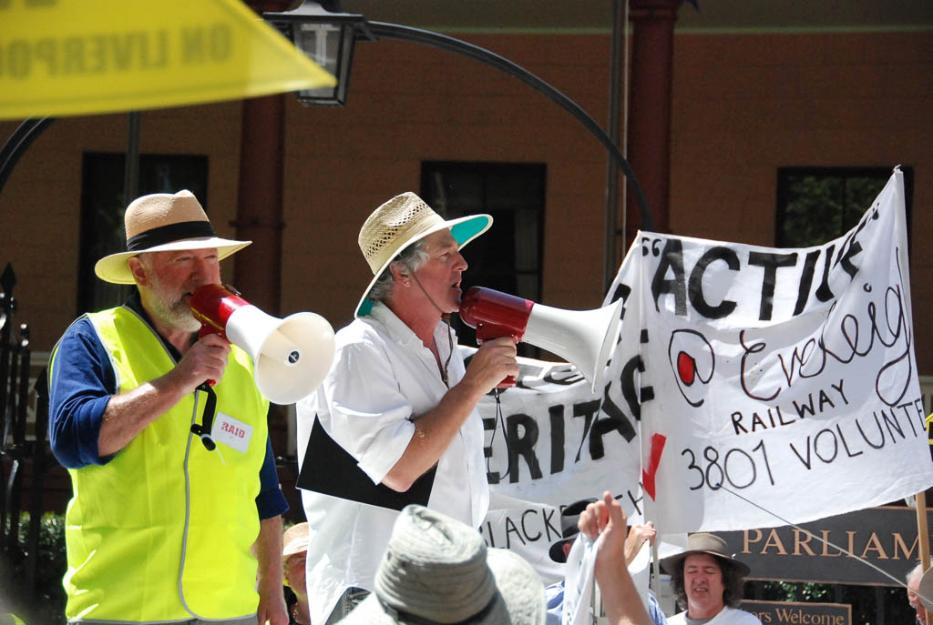
Harvey Rose OAM (R.I.P.) and Shane Withington in full flight outside the NSW Parliament during the campaign to Save Currawong - photo by Michael Mannington OAM
Mayor Harvey Rose:
"Welcome here, on behalf of Council, to this great historic day for Pittwater and for all the people of NSW. It is great that we are here to celebrate a win by the people over the forces who would have taken away that which is the peoples. We leave to our children and grandchildren and even when they’re gone, to the future of this area, a marvellous legacy. It is not, as Shane said, a private enclave, it is not a private sub-division. It is the people’s place. It is somewhere that anyone can come. Anyone can interact with Nature, with the heritage and be uplifted.
I’d like to thank the Friends of Currawong, that marvellous group that have given of their time and efforts to help achieve this outcome. I’d like to thank Rob Stokes. Rob has done everything possible to make sure this occurred. I’d like to thank Bronwyn Bishop who did everything she could anywhere she could and certainly done her bit. Pittwater Council has been solid in the last 15 years and when the window of opportunity came, as it did in the last six months, we had the expertise, we had the knowledge, we had the background to be able to see that through. So, put all those things together, I’ve been in a lot of community campaigns but if you put those three things together; a strong and active community group, faithful members who care and interact and are part of a whole team, and a Council that knows what it’s doing and, again, is willing to be part of a team, combine that with a community that is really proud of its heritage and will fight to keep the things it needs; our hospital, Currawong, and whatever else it takes, put those things together and you can get a win. And that’s what we have ladies and gentlemen. We have had a win, a win for our community, a win for NSW, a win for all the people. That’s what we’ve had.
So , thanks to you all. Thanks firstly to the Friends of Currawong, for their love and heart and solid fight. To the Friends of Currawong’: (Crowd hip hip, hooree)
To the donors, I have never heard of such a donation, 1.4m; (cheers)
To all the politicians, particularly Rob, and to Bronwyn for helping where she could;
For our Council, which has been solid and has done all it could all along the way;
And to the Department of Lands and other politicians (laughter from crowd but also cheers)
And to the people of Pittwater: (cheers)
We’re now going to cut the cake ladies and gentlemen, please share it with us."
Shane(on Rob Stokes while cake was being cut); "One day at Parramatta, when we had to fight the Heritage Office, I turned up at dawn and at 8 o’clock, in the pouring rain, middle of winter and cold, I was looking for a cup of coffee, and I walked around the corner and of course, there was Rob Stokes, who’d spent all night sleeping on a couch in his Parliamentary Office and was there at 8 o’clock in the morning to go and fight for Currawong. If you want to have a look at what Rob did for Currawong, go and look at Hansart, at his beautiful eloquent speeches, and then you’ll see what Rob did for Currawong. So thanks Rob for your wonderful work!"
Currawong has been a great success story for the Council. Not only does it give this important site back to the people of Pittwater, it also opens up Currawong to the wider public in terms of a wonderful low-key holiday destination. - Pittwater Councillor Bob Grace.
“It was a fabulous day of celebration. It has taken years, indeed it has been years since Shane Withington, President of the Friends of Currawong, came to me so we could work together to stop the sale and monstrous development of Currawong. Rob Stokes also took up the fight and did a fantastic job, as did the council which remained committed to stop the unwanted development.” - Hon. Bronwyn Bishop MP, Federal Member for Mackellar
On March 25th 2015, and now part of an incumbent government, Pittwater MP Rob Stokes announced the establishment of the Currawong State Park. Another great day.
On September 15th, 2017 Member for Pittwater Rob Stokes announced the state Government would provide $1 million to support the newly minted Council with the refurbishment of the Currawong Beach cottages. Midholme, the original Currawong homestead dating from 1911, was carefully restored in 2014 through collaboration between Pittwater Council, Pittwater Environmental Foundation and Friends of Currawong. The next phase of works was to focus on updating the 1950s cottages and the Lodge.
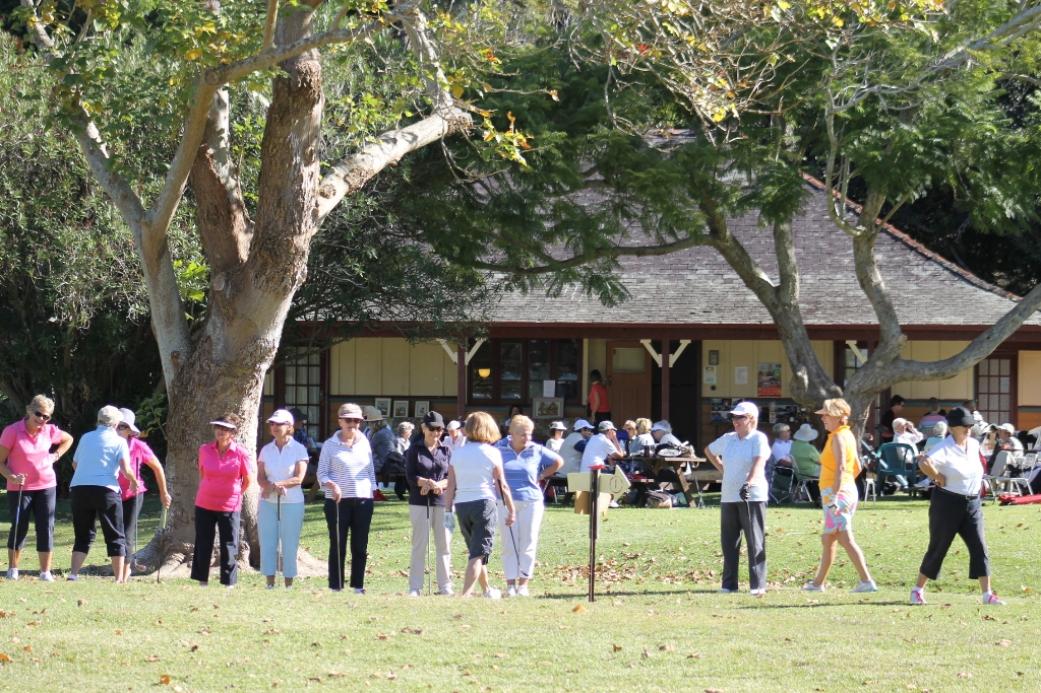
About the Cabins
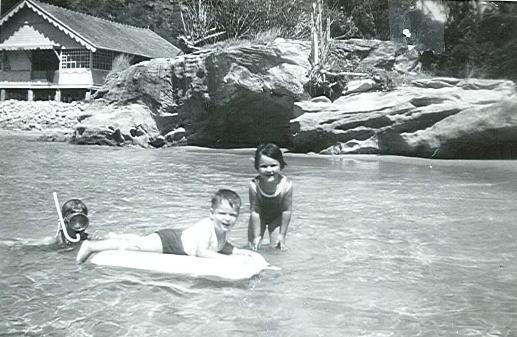
Above: Peter, Mark and Julie at Northend, 1964.
That building in the background is Northend. It was originally on the northern end. It was build up with rocks in front. It was once used in the Australian TV series called Riptide. We used to go and stay there when there were 9 of us - 7 children. It had enough room for a large family. It has more room than Midholme I think. It was fun. The shower was cold and we could look down through the wooden slats to the ground underneath where the water washed away down a hole. We could jump off the verandah into the water when it was hightide.
I think in the 70s it was carried away or destroyed because the tide was so high the place just floated away. A family named Carey was in it at that time. Gabriel Carey was a co author of Puberty Blues with Cathy Letts. Gabriel was there holidaying one of the years that I went back with my husband and sister in the late 90s. So you can see, families returned year after year even taking their children back as well.
During their occupation of the property, and Midholme, the Stiles also constructed a house and garden later known as 'Wilderness' or 'Southend'. Southend was constructed prior to 1937. The building was constructed in a Federation style, however it was destroyed by fire sometime between 1946 and 1949. Bernard Stiles junior recalled that this building [Southend] replaced an earlier structure which also had gardens containing jonquils and geraniums. Southend was also used as a general store by the Stiles family and for a brief period as a guest house.
When the Stiles subdivided some portions and sold these Hector Henry Forsayth, one purchaser, built Northend within their allotment which fronted the beach in the 1920s. They also constructed a boatshed, a flagpole and a concrete retaining wall in an effort to obstruct the tide which was undermining the foundations of Northend.
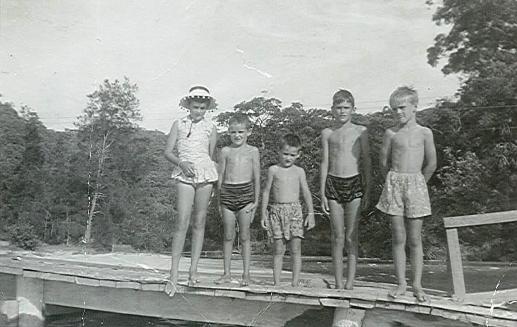
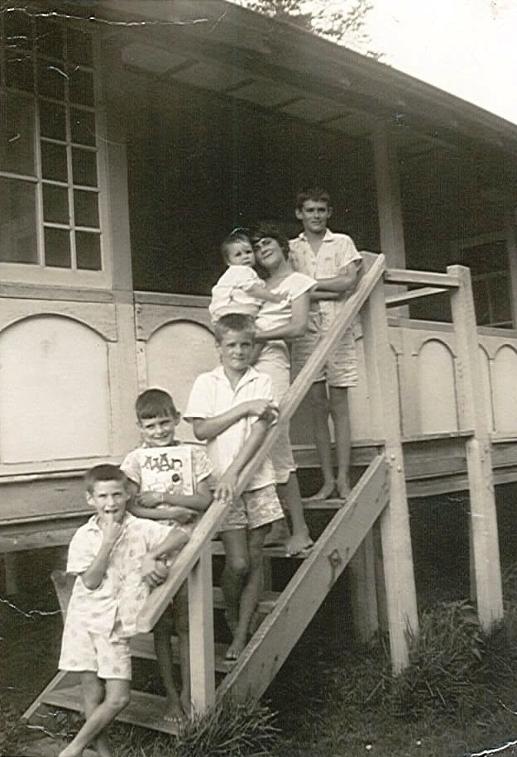
Above: Patricia and siblings on Northend bridge, 1959. And: Peter, David, Robert, Trish (Julie) and Terry, circa 1962 on Northend steps